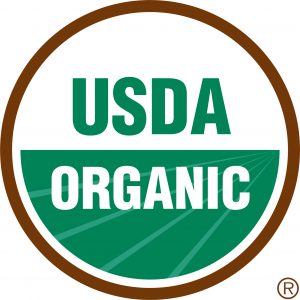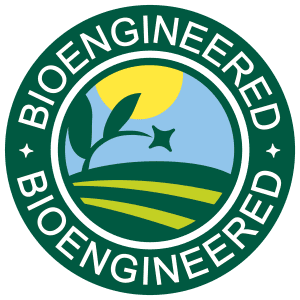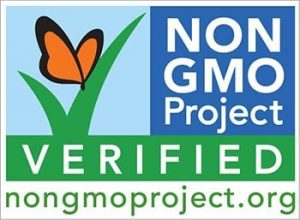What do Labels Really Mean? Organic, Natural, Cage-Free, Grass-Fed, Pasture-Raised and Local
Author: Sharon Gray
Sharon.Gray@uconn.edu
Reviewers: Umekia Taylor, UConn Extension
Publication EXT112 | March 2025
Organic, Natural, Cage Free, Grass Fed, Pasture-Raised and Local are terms on food labels and used in the news, but what do they really mean? And how important is it to buy organic and natural foods when it comes to healthy eating? Some terms are helpful, and others are misleading.
Below are some of these terms and the meaning behind them.
- Natural
The term ‘natural’ broadly means minimally processed and free of synthetic dyes, coloring, flavorings and preservatives. These foods can still contain such ingredients as high fructose corn syrup and be made from genetically modified organisms (GMO’s). The natural label only addresses how food is processed, and there is no certification or regulatory process for the label.
Natural is largely unregulated by the United States Department of Agriculture (USDA) for most foods except meat, poultry and egg products. Foods containing meat, poultry, or eggs must be minimally processed and free of artificial ingredients to be labeled natural. These animals may be given antibiotics, growth hormones, and fed GMO feed.
Other food products are regulated by the Food and Drug Administration (FDA). The FDA considers the term natural to mean that nothing artificial or synthetic (including all color additives) is included in or added to food that is not typically expected in that food.
- Organic
‘Organic’ claims on food products are regulated by the USDA. Organic foods must be produced without the use of most conventional pesticides, synthetic

fertilizers, sewage sludge, irradiation, or genetic engineering. These foods are also produced using methods that promote the conservation of natural resources.
Organic meat, poultry, eggs and dairy products come from animals that are raised without the use of antibiotics or growth hormones. Animals also must be raised in living conditions that encourage natural behaviors such as the ability to graze on pastures and are fed 100% organic feed. This makes it less likely that the animals will carry disease or create antibiotic–resistant strains of bacteria. The USDA published new standards for organic livestock and poultry production in 2024. This final rule improves uniformity with regard to animal welfare practice requirements, promoting their well-being and natural behaviors and strengthening enforcement of USDA organic regulations.
- Organic crops must be grown in safe soil, have no modifications and must remain separate from conventionally grown crops. Farmers are not allowed to use synthetic pesticides, bioengineered genes (GMOs), petroleum-based fertilizers and sewage sludge–based fertilizers. The Environmental Working Group (EWG) is a non-profit organization that provides an annual list called the ‘dirty dozen’. The list names 12 fruits and vegetables found to be highest in pesticide residues based on laboratory tests from the USDA.
The 2024 dirty dozen currently includes:
- strawberries
- spinach
- kale
- grapes
- peaches
- pears
- nectarines
- apples
- peppers
- cherries
- blueberries
- green beans
There is considerable controversy about health risks posed by chronic low level dietary pesticide exposure. However, 2022 FDA residue findings suggest, particularly for domestically produced foods, that pesticide applications generally demonstrate compliance with legal and established agricultural practices via the Environmental Protection Agency (EPA). Most samples tested contained no detectable pesticide residues while any detected residues were typically present at levels far below the tolerance levels. This testing was conducted on produce that was not labeled organic.
In the United States there are four levels of organic claims:
- 100–percent Organic
- Products that are completely organic or made of only organic ingredients qualify for this claim and a USDA Organic seal
- Organic
- Products in which at least 95 percent of the ingredients are organic qualify for this claim and a USDA Organic seal.
- Made with Organic ingredients
- These are food products in which at least 70 percent of ingredients are certified organic. The USDA Organic seal cannot be used but ‘made with organic ingredients’ may appear on its packaging.
- Specific Organic Ingredient Listings
- Specific organic ingredients may be listed in the ingredient statement of products containing less than 70 percent organic products.
If a product is made, and the manufacturer wants to claim that it or its ingredients are organic, the final product needs to be certified by an authorized USDA certifying agent. Organic food may have slightly more of certain nutrients, but overall, it has similar nutritional make up to non-organic food. Consumers often associate organic food with small farms; however, like non-organic food, most organic food is produced by large farms.
- Grass–fed and grass-finished or 100% grass-fed
If an animal is grass-fed and grass-finished, then their feed was composed entirely of grass, legumes, and green vegetation, up until when the animal was slaughtered. This means that 100 percent grass fed animals are never confined to a feedlot, and can access pasture throughout their lift. Grass-fed is distinct from grass-finished.
Grass Finished allows animals to be fed grain before moving to a grass diet. However, this label does not address the use of antibiotics, hormones, or pesticides. USDA defines grass-fed as it applies to labeling but does not regulate it in any way. Grass-fed beef is leaner and has been shown to have healthier omega-3 fatty acids.
This term simply indicates that animals were not kept in cages. They are still in an enclosed facility, but with unlimited access to food and fresh water. The
facility, however, could be very small and crowded with little room to move about. This health claim does not mean that animals were free to roam in pastures or that they had access to the outdoors. Egg sellers can use a third party to certify claims, or ask the USDA to certify that the hens are cage free or free range. Companies that opt for this USDA certification have to pay a fee. Many cage free claims are not certified, however, making it a misleading label.
- Free Range
The USDA has approved this term for animals that were raised in a sheltered facility with unlimited access to food, water, and access to the outdoors. It does not indicate that the animal actually went outside during its lifetime, only that there was a door to the outside. Free range hens should have continuous access to the outdoors while they are in their laying cycle. The term does not specify the outdoor conditions, but pastures are permitted to be fenced and covered in netting.
- Pasture–Raised
The USDA has not developed a definition for this term yet; however, many farmers use it to distinguish themselves from free range farms. Animals are free to roam outdoors with unlimited access to food, fresh water, and indoor shelter in case of bad weather. Pasture–raised animals spend more time outdoors than indoors compared to free range designated animals. This is the most ideal label to look for when choosing chicken and eggs. Often these animals are not given growth hormones or antibiotics, but you need to ask to be 100 percent sure.
The Food Safety and Inspection Service (FSIS) of the USDA strongly encourages the use of third- party certification to substantiate animal–raising or environment–related claims to help ensure that such claims are truthful and not misleading to the public.
- Locally Grown
What is local food? Unlike organic standards, there is no specific definition. Generally local food means food that was grown close to home. This could be in your own garden, your local community, state, or region. People buy locally for financial benefits, less transportation of the food and freshness of the food. Small, local farmers often use organic methods, but sometimes cannot afford to become certified organic. Visit a farmer’s market and talk to the farmers to find out how their fruits and vegetables are grown.
Genetically modified organisms (GMOs) are bioengineered products in which the genetics were changed purposely, using DNA technology. Bioengineering
is a precise process to create GMO’s. There is considerable consumer confusion about what GMOs are, and risks to health.
According to most scientific consensus, an overwhelming majority of scientists believe that GMO products are safe to consume. Only 14 crops have GMO versions. The current approved GMO varieties are:
- alfalfa
- apple (Arctic varieties)
- canola
- corn
- cotton
- eggplant (BARI,Bt Begun varieties)
- papaya (ringspot virus resistant varieties)
- pineapple (pink flesh varieties)
- potato
- salmon (Aqu Advantage)
- soybean
- squash (summer)
- sugarbeet
- sugarcane (Bt insect resistant varieties)
A ‘non-GMO' label on any other product is misleading because no GMO version exists. ‘Non- GMO Project Verified’ is a label that indicates a product has
been evaluated and meets the Non- GMO Projects standards. They verify that the process products go through from seed to shelf are produced according to their rigorous best practice for avoiding GMO’s. It is an annual certification to assure consumers who wish to avoid GMO foods altogether.
Cost is a consideration when buying food with labels. Organic foods can cost significantly more depending on the item. For example, organic eggs can cost up to 109 percent more than conventional eggs. A recent report from the USDA noted that organic food costs varied between 15 percent more for onions and carrots and up to 100 percent more for skim milk. Consumers were also paying price premiums of 10-62 percent for non-GMO products analyzed in 2018.
Resources
Chambers, V. E., Tran, T., & Chambers IV, E. (2019). Natural: A $75 billion word with no definition—Why not? Journal of Sensory Studies, 34(e12501). https://doi.org/10.1111/joss.12501
Environmental Working Group. (n.d.). Dirty dozen. https://www.ewg.org/foodnews/dirty-dozen.php
National Center for Biotechnology Information. (2020). Article on PMC7019963. National Institutes of Health. https://pmc.ncbi.nlm.nih.gov/articles/PMC7019963/
National Center for Biotechnology Information. (2024). Article on PMC10987935. National Institutes of Health. https://pmc.ncbi.nlm.nih.gov/articles/PMC10987935/
National Organic Program. (2023, November 2). Organic livestock and poultry standards. Federal Register. https://www.federalregister.gov/documents/2023/11/02/2023-23726/national-organic-program-nop-organic-livestock-and-poultry-standards
National Sustainable Agriculture Coalition. (2019). 2019 organic survey finds big gains for organic. https://sustainableagriculture.net/blog/2019-organic-survey-finds-big-gains-for-organic/
Non-GMO Project. (n.d.). Non-GMO Project Verified. https://www.nongmoproject.org/
Science ABC. (n.d.). Why is organic produce more expensive than conventional produce? https://www.scienceabc.com/nature/why-is-organic-produce-more-expensive-than-conventional-produce.html
ScienceDirect. (2018). Article on organic and conventional produce pricing. https://www.sciencedirect.com/science/article/abs/pii/S0306919218301131
U.S. Department of Agriculture. (n.d.). Does the label "free-range" pertain only to poultry or also to meats? https://ask.usda.gov/s/article/Does-the-label-free-range-pertain-only-to-poultry-or-also-to-meats
U.S. Department of Agriculture. (n.d.). USDA graded cage-free eggs: All they're cracked up to be? https://www.usda.gov/about-usda/news/blog/usda-graded-cage-free-eggs-all-theyre-cracked-be
U.S. Department of Agriculture, Agricultural Marketing Service. (n.d.). Bioengineered foods list. https://www.ams.usda.gov/rules-regulations/be/bioengineered-foods-list
U.S. Department of Agriculture, Food Safety and Inspection Service. (2024). FSIS guidance document FSIS-GD-2024-0006. https://www.fsis.usda.gov/sites/default/files/media_file/documents/FSIS-GD-2024-0006.pdf
U.S. Food and Drug Administration. (n.d.). Use of the term "natural" on food labeling. https://www.fda.gov/food/nutrition-food-labeling-and-critical-foods/use-term-natural-food-labeling
The information in this document is for educational purposes only. The recommendations contained are based on the best available knowledge at the time of publication. Any reference to commercial products, trade or brand names is for information only, and no endorsement or approval is intended. UConn Extension does not guarantee or warrant the standard of any product referenced or imply approval of the product to the exclusion of others which also may be available. The University of Connecticut, UConn Extension, College of Agriculture, Health and Natural Resources is an equal opportunity program provider and employer.


